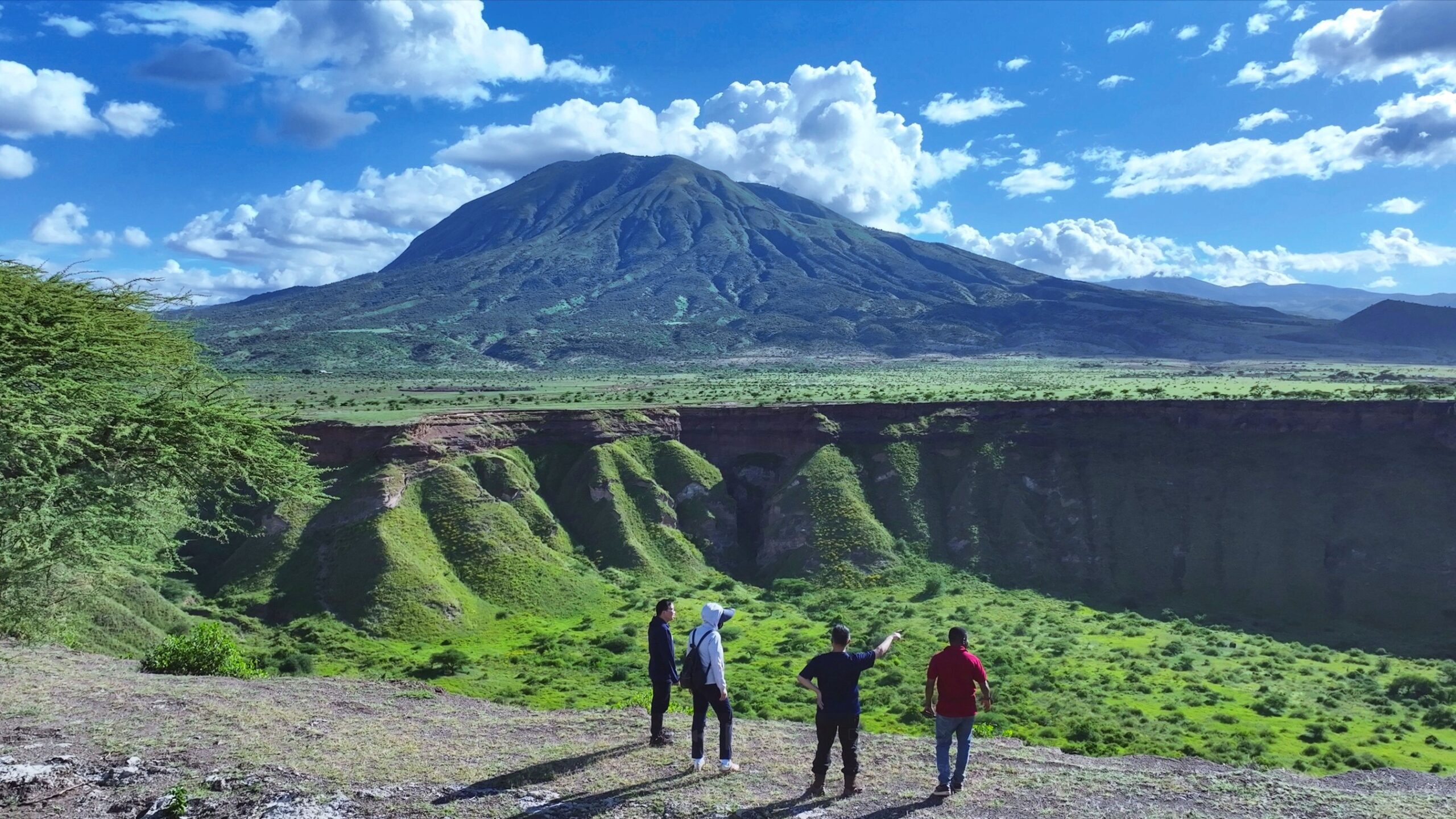Business
Tanzanian Geopark Revitalized with Chinese Support and Innovation

In a significant development for Tanzania’s first global geopark, the Ngorongoro-Lengai Global Geopark has undergone a revitalization project with critical support from China. As part of a reconstruction initiative, over 50 climbers, including both Chinese and Tanzanian nationals, gathered at the Ol Doinyo Lengai volcano in September 2023. Their mission was to conduct a geoheritage survey before dawn, ensuring their observations of the spectacular molten lava were captured before sunlight altered the scene.
The Ngorongoro-Lengai Global Geopark, located in northeastern Tanzania, is the only global geopark in Sub-Saharan Africa, encompassing about 12,000 square kilometers. This region is renowned for its remarkable geological features, including the Ngorongoro Crater and the active Ol Doinyo Lengai volcano. In 2018, UNESCO recognized it as a global geopark; however, it faced significant challenges, leading to a yellow warning from the organization in 2022. This warning highlighted issues such as inadequate infrastructure and insufficient visitor information.
Recognizing the urgency of the situation, the Chinese government stepped in during Tanzanian President Samia Suluhu Hassan‘s visit to China in November 2022. During this visit, President Xi Jinping and President Hassan finalized a project aimed at addressing the geopark’s challenges. The initiative, supported by the Agency for International Economic Cooperation of the Ministry of Commerce and the China Geological Survey, has focused on enhancing both technical and infrastructural aspects of the geopark.
Ren Junping, director of the Southern Africa Geological Survey Cooperation Center at the Tianjin Center, emphasized the collaborative nature of the project. “We are responsible for the entire workflow, from planning and implementation to construction,” he stated. The project has faced logistical challenges, including balancing local needs with environmental preservation.
Over the past year, the team conducted a comprehensive investigation of the geopark, assessing geological heritage sites and volcanic structures. This investigation aims to provide vital data for spatial planning and scientific route design. Project member Sun Kai noted the complexity of the undertaking, which required not only geological surveys but also public outreach and digitalization efforts.
A significant focus of the project has been the development of a tourist-oriented service platform that utilizes China’s information technology. Nearly 300 signs have been installed throughout the geopark, providing direction and safety information in English, Swahili, and Chinese. Additionally, a field interpretation system offers multilingual scripts for key locations, facilitating a broader understanding of the area.
To further enhance visitor experience, the team designed a new geological museum, essential for a global geopark. The museum’s design reflects the traditional Tanzanian thatched hut style and includes solar panels to mitigate local power outages. Interactive exhibits, such as volcanic eruption simulations, aim to engage visitors and educate them about the region’s geological history.
The geopark is also home to a diverse range of wildlife, including approximately 300,000 animals such as wildebeests, zebras, and lions. To ensure safety, the team has implemented measures such as hiring armed personnel and maintaining primitive paths to protect the wildlife habitat. Project member Wu Xingyuan recounted a memorable moment observing a lion up close during the team’s work.
In addition to wildlife protection, the project has prioritized community engagement, particularly with the indigenous Maasai population. Tours showcasing the Maasai way of life have been organized, allowing visitors to experience traditional food and dance. Furthermore, a talent training program for local residents has been established, equipping them with knowledge about geological heritage and disaster monitoring techniques.
The hard work of the project team paid off when UNESCO successfully revalidated the geopark in December 2022. The revitalization efforts are on track for completion by November 2025. Zhang Jianping, vice-president of the Global Geoparks Network, highlighted the project’s role in enhancing local infrastructure and fostering cultural exchanges, emphasizing the need for effective management of the geopark.
According to Zhang Zhonghui, a senior engineer and member of the Geological Society of China, this foreign-aid project exemplifies international cooperation. “The project has not only helped Tanzania create distinctive cultural and tourism products but also achieved long-term empowerment through personnel training and improvements in local livelihoods,” he stated.
As the Ngorongoro-Lengai Global Geopark moves towards completion, it stands as a testament to the power of collaboration between nations and the potential for sustainable development in preserving the natural and cultural heritage of Tanzania.
-

 Politics1 week ago
Politics1 week agoDallin H. Oaks Assumes Leadership of Latter-day Saints Church
-

 Business1 week ago
Business1 week agoTyler Technologies Set to Reveal Q3 2025 Earnings on October 22
-

 Sports1 week ago
Sports1 week agoSteve Kerr Supports Jonathan Kuminga After Ejection in Preseason Game
-

 Lifestyle1 week ago
Lifestyle1 week agoDua Lipa Celebrates Passing GCSE Spanish During World Tour
-

 Entertainment1 week ago
Entertainment1 week agoZoe Saldana Advocates for James Cameron’s Avatar Documentary
-

 World1 week ago
World1 week agoD’Angelo, Iconic R&B Singer, Dies at 51 After Cancer Battle
-

 Health1 week ago
Health1 week agoCommunity Unites for Seventh Annual Mental Health Awareness Walk
-

 Business1 week ago
Business1 week agoMLB Qualifying Offer Jumps to $22.02 Million for 2024
-

 Science1 week ago
Science1 week agoChicago’s Viral ‘Rat Hole’ Likely Created by Squirrel, Study Reveals
-

 Lifestyle1 week ago
Lifestyle1 week agoKelsea Ballerini Launches ‘Burn the Baggage’ Candle with Ranger Station
-

 Health1 week ago
Health1 week agoRichard Feldman Urges Ban on Menthol in Cigarettes and Vapes
-

 Business1 week ago
Business1 week agoMega Millions Jackpot Reaches $600 Million Ahead of Drawings









